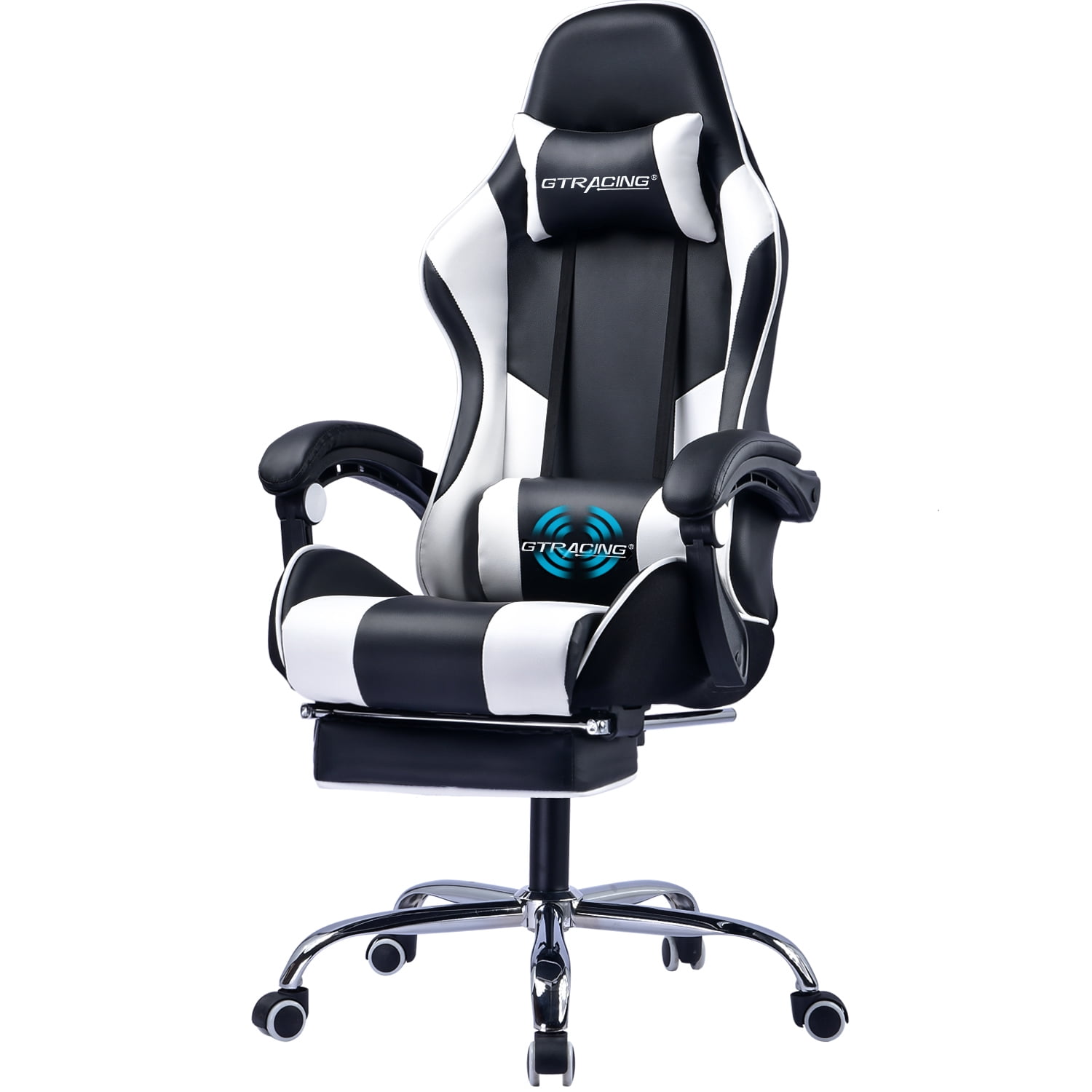Buying Guide: Gaming Chair With Footrest And Massage

The acquisition of a gaming chair, particularly one boasting a footrest and massage function, transcends mere consumerism; it’s an investment in ergonomic well-being and enhanced gaming experiences. Choosing wisely requires careful consideration of several key factors, a journey we shall now embark upon. This guide will navigate you through the complexities of budget, size, features, and material quality, ultimately empowering you to make an informed decision.
Budget Considerations, Gaming chair with footrest and massage
The price range for gaming chairs with footrests and massage capabilities varies significantly. Entry-level models might start around $200, offering basic features, while high-end chairs can exceed $1000, incorporating premium materials and advanced technology. Establishing a realistic budget before beginning your search is crucial. Consider this as an investment in your comfort and health, balancing cost with the features you deem essential. For example, a budget of $500-$700 would likely offer a good balance between features and quality.
Size and Dimensions
Determining the appropriate chair size is paramount. Measure your height and weight to ensure a comfortable and supportive fit. Manufacturers typically provide detailed dimensions, including seat width, depth, backrest height, and overall dimensions. Overlooking this step could result in a chair that’s too small or too large, compromising both comfort and posture. Pay particular attention to the seat depth; sufficient depth prevents pressure points and ensures proper thigh support. For instance, a taller individual might require a chair with a higher backrest and a deeper seat.
Material Quality: Leather vs. Fabric
The choice between leather and fabric significantly impacts both comfort and durability. Genuine leather offers a luxurious feel and excellent breathability, but it comes with a higher price tag and requires more meticulous care. PU leather (polyurethane) provides a more budget-friendly alternative, mimicking the look and feel of genuine leather, although it might not be as durable or breathable. Fabric upholstery, often made from breathable mesh or durable polyester, is generally more affordable and easier to clean. However, it might not be as resistant to wear and tear as leather. The best choice depends on individual preferences and budget.
Chair Mechanisms: Tilt, Recline, and Rocking
The functionality of the chair’s mechanisms directly impacts the gaming experience.
- Tilt Mechanism: Allows for slight adjustments to the chair’s angle, providing additional support and comfort during extended gaming sessions. Pros: Simple, affordable. Cons: Limited adjustability, may not be sufficient for some users.
- Recline Mechanism: Enables the backrest to recline significantly, offering a more relaxed posture, ideal for breaks or longer gaming periods. Pros: Enhanced comfort, promotes relaxation. Cons: Can be less supportive for intense gameplay, may require more space.
- Rocking Mechanism: Allows the chair to gently rock back and forth, offering a dynamic and relaxing experience. Pros: Promotes relaxation, reduces stiffness. Cons: May not be suitable for all gaming styles, can be distracting.
The optimal mechanism depends on personal preference and gaming style. A competitive gamer might prefer a chair with a robust tilt mechanism for optimal posture, while a casual gamer might prioritize a recline mechanism for comfort during longer sessions.
Decision-Making Flowchart
Begin by defining your budget. If your budget is under $300, prioritize a chair with a comfortable fabric cover and a basic tilt mechanism. If your budget is between $300 and $700, consider PU leather, a recline mechanism, and a footrest. For budgets exceeding $700, explore genuine leather, advanced massage features, and a rocking mechanism. Always prioritize proper sizing to ensure comfort and support.
